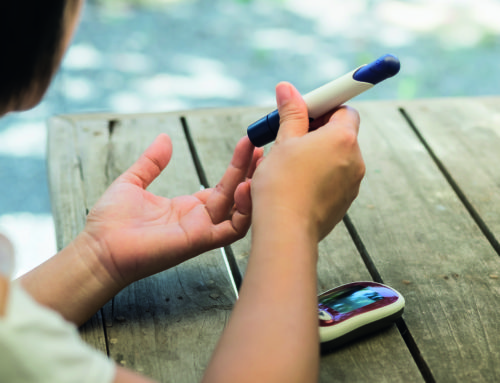Dr Edward Farnan, Medico-Legal Adviser at the Medical Defence Union, details the best response when contending with patients who are displaying challenging or threatening behaviour.
The majority of consultations go well, with both the medical professional and the patient feeling that their expectations have been met.
Unfortunately, in a minority of cases, some consultations can escalate to aggressive behaviour or even violence. While such incidents are rare, it’s understandably distressing for the staff directly involved – and also highlights the risks which healthcare staff can be exposed to.
A 2017 report in the BMJ looking at crime figures obtained from UK police forces showed a nine per cent rise in the overall number of recorded crimes committed on GP premises and health centres; from 1,974 crimes in 2015-to-2016 to 2,147 in 2016-to-2017. The figures showed a rise in assaults, harassment and threatening behaviour, illustrating that physical attacks can just be the tip of the iceberg when it comes to dealing with challenging behaviour.
Reasons for Aggression
There are a number of reasons why patients may become violent or aggressive. In some cases, threatening behaviour may be explained by an underlying medical problem. Patients with an acute physical or mental illness may behave in a way which is not in-keeping with their character when they are well. Patients who are unwell, afraid, or in pain may react in an unpredictable way.
It is particularly challenging if a patient whose previous behaviour has never been a concern suddenly becomes aggressive if they feel that their requests are not being taken seriously, or if a clinician does not appear to be acknowledging their distress.
Other factors which may contribute to disruptive behaviour include communication or language problems, frustration, previous poor experience, and unrealistic expectations.
Preventing Challenging Behaviour
Often, the first step is being aware of the potential for a situation to escalate even with patients who have no history of threatening or aggressive behaviour. Be aware of the patient’s body language, what they say, and how they say it. By acknowledging that a patient is unhappy, and indicating that you wish to understand why, may sooth a patient who otherwise could become aggressive.
Listening to the patient, asking open-ended questions, and avoiding encroaching on the person’s personal space are all ways of reducing tension. NICE has published guidance on how to manage violence and aggression in a healthcare setting.
If a patient becomes aggressive or violent in spite of these steps, then it may be appropriate to consider what follow-up action is required.
It’s sensible to have a clear policy in place, setting out how abusive and threatening behaviour from patients will be treated. This should be readily available – for example a notice in the patients’ waiting room, or on the practice website.
Warning Patients
If you feel that it’s appropriate to warn a patient about their behaviour then remember to deal with this separately from any other issues, for example, a response to a patient complaint.
The possibility of a warning should be discussed within the practice beforehand, and the discussion recorded. In the Medical Defence Union’s (MDU) experience, warnings about behaviour, or removal from a practice list, can result in a complaint; it’s helpful to be able to show that the decision taken was reasonable and proportionate.
The General Medical Council, and the standard GP contract, usually require a warning to have been issued before a patient is removed from a practice list. However, if there has been a threat of violence, or actual violence, it’s appropriate to call the police and removal from the practice list without prior warning may be possible. Consider carefully how much confidential information might justifiably be released to the police and get advice from the MDU or your own MDO.
Appropriate staff training may also mitigate the risks, as might giving careful consideration to the layout of consulting rooms, or the use of panic alarms.
Visiting the Patient at Home
It can be especially challenging if a patient becomes aggressive during a home visit as the environment will be less familiar and help may be less readily available. You may wish to defuse the situation, but it’s also acceptable to end a consultation and leave, particularly if there seems to be an imminent risk of physical aggression.
If a patient who has previously been aggressive requires a home visit, and is unable to come to the surgery, then a risk assessment may be necessary. It may be appropriate to visit with a colleague (staff numbers and workload permitting). Phoning in advance to find out who will be there, to agree what behaviour will be acceptable, and to get a general feel for the patient’s mood may also be helpful.
Challenging consultations with patients or relatives are unusual but it is worth reviewing your practice policy on this issue, including security in the practice and on home visits and staff training to ensure that you minimise the risk of patients becoming violent or aggressive.








